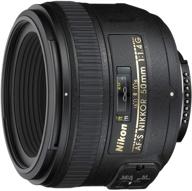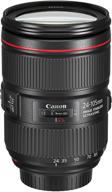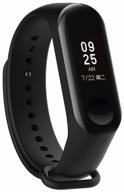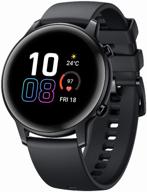
Review on 📷 Sigma APO Macro Telephoto Zoom Lens for Minolta and Sony SLR Cameras, 70-300mm f/4-5.6 DG by Debbie Wells

Before you buy, think about how you will use this lens.
I have this lens and have been using it actively for almost 4 months now. I bought this based on the overwhelmingly positive reviews which I feel are a bit misleading. Although this article has almost 250 reviews, I hope to help at least some of you who want to buy. Before I settle on this lens, I think it's important to know that this is more of a budget, dedicated lens than anything else. If you're looking for something to walk around with and get some very close wildlife or sports shots, you're going to be frustrated or disappointed. I won't go into detail, but I'm guessing if you're on a tight budget or new to telephoto and hoping to get a good deal, you might not want to go down this route. Let me try to explain. Firstly, every slightest movement at a distance of 300mm is amplified dramatically. If you have a cropped sensor (APS-C) camera like the Canon Rebel or Nikkon D7100, you'll get a 480mm equivalent zoom. While that extra length is pretty steep, it also means that the judder is amplified even more. Even if you're a surgeon, your hands shake a little, and with this zoom it's almost impossible to hold your hand for a good shot. You will get fuzzy or fuzzy areas almost every time. More expensive telephoto lenses compensate for this with something called image stabilization (IS) or optical stabilization (OS) for the Sigma. She doesn't have that lens. So if you want to get sharp, crisp shots, you'll need at least a tripod or monopod. They need lots of light to be able to do this. Without much light, you'll need to open your aperture or increase your ISO. The aperture on this lens only opens up to f5.6 at 300mm, so you need a bright day, lots of light, or a steep ISO that introduces noise. In addition, this lens is very soft at 300mm with the aperture wide open. That means you won't get very sharp images at 300mm at f/5.6. To compensate, you can lower your aperture to around f8-f9 and get some of your detail back, although you'll also increase the depth of field, which might not be ideal when trying to get your subject to stop off. from the background, and in turn this reduces the amount of light entering the lens, so you need to compensate for that. So the bottom line is this lens is best used in bright conditions with good stabilization techniques and a small aperture when shooting at full zoom. For me, that makes this lens special. Well this lens works pretty well in those conditions, I've used it for event, wildlife and macro photography and managed to get some really good shots in each of those situations. However, when photographing wildlife and events, realizing the limitations of the lens in the field was incredibly frustrating. I ended up needing a hot shoe flash and a tripod to get the desired results in the event settings, which is actually implausible 90% of the time. In the wild I was able to photograph subjects that stayed very still and got some great shots of dragonflies and other critters when they were about to stop for a second. But if you've ever photographed wildlife, you know that this pause moment is usually very brief. That leaves the macro, well it's not a true macro lens. In other words it doesn't give you a 1:1 ratio, this lens maxes out at 1:2 which is still pretty tight and I think with a crop sensor camera most people will be very happy with the results . Also, such a long focal length means you can get away from the subject and not have to get so close to shoo away butterflies and the like. In a studio setting, this gives you a little more room for lighting without getting in the way of the camera. You can read some of the complaints about the short focal length in macro mode. This is actually a typical macro product, all macro lenses have the same characteristics. You can reduce the aperture at the expense of light, which is very valuable in macro photography. But if you really want the impressive depth of field you see in most professional macro shots, you need to learn something called focus stacking. I won't go into detail, but my point is that macro photography inherently has a very, very shallow depth of field. So let's briefly discuss the general characteristics of a lens. It would be a good idea to have it in elements. Sand and rain get into the lens quite easily. It's mostly plastic, but looks pretty solid. It's not very heavy considering its focal length, but it will still be one of the heaviest lenses in your bag. After 4 months of use, the focus ring loosened up a bit and the autofocus started twitching a bit. I've also been pretty rough with it, and it's quite tarnished in event scripts. The Sigma packaging is also impressive. You get a really nice, custom-made lens body, as well as a sturdy lens hood. For such a cheap lens, the initial aperture was quite high. FOCUS AND ZOOM: The focus ring is nice and big, but also very loose in manual mode. Some people prefer this, but I actually prefer the tighter/smoother feel of the ring when it's on a telephoto lens, as the settings become a lot more dramatic when zoomed in. The autofocus is pretty loud, but also surprisingly quick for the range. Maybe not fast enough for a soccer game or catching a bird in flight, but it's faster than I thought it would be in this price range. The zoom ring is a bit smoother, but it's definitely loosened up since I bought it. I really like the feel of the zoom, it's nice and smooth, not too stiff but not wobbly either. It goes from 70 to 300 in just over a quarter turn. This is also a telescopic zoom that is very sensitive to dirt and the ingress of water. I'm pretty sure it's time to fix mine. SHARPNESS: Sharpness is everywhere on this lens, at 70mm wide-angle it happens to be soft and seems to suffer from some focusing issues (again, this could be due to abuse). It's always soft at 300mm f5.6, you'll need to close that aperture down to compensate. In the middle there are fairly acceptable results. You won't be surprised when you compare it to a higher quality lens, but you get some acceptable shots and with some sharpness I'm usually happy with the results. In macro mode with lots of light and good stabilization, I am very impressed. With the right setup I get a lot of details. GENERAL USE: I would not recommend this lens for everyday use. I just don't think you'll be happy with the results of walking, and the extra effort required to get good results isn't conducive to running and shooting. It is not weatherproof so you must handle it with care and keep it away from sand and rain. For sports I'd say probably not unless you have a monopod and it's a very bright day outside. If you're setting up still life, macro photography, or wildlife where your subjects aren't shooting back and forth all over the place, you can get some good shots with this lens, and on a budget I'd say yes, it's worth the extra effort. Save it money. PRO: Great priceNice packaging. Individual case and lens hood included. Good for very specific types of recordings. Pleasant zoom ring feel Fairly fast focusing Bonus pseudo macro mode. Cons: Soft at full zoom. Sharpness is somewhat random and will require some testing/training/compensation. Holding at 300mm is next to impossible. The telescope lens is prone to dust and damage. No weather protection. No image stabilization. Without microfocus adjustment, focusing problems can occur. It's not an all-round lens, but if you need a stable shot in a controlled or well-lit situation, it's a good option. If you can afford a nicer telephoto lens like the Canon f2.8 IS II you probably won't be reading this, but for shooters on a budget or people who want to play around with a new style without fully committing to the tune from 2000 onwards € this lens is a good alternative. I don't use it as often as I would hope, but I enjoy taking it out. It has a pretty steep learning curve and I can't overstate how specialized this lens really is. But if you know what you're getting yourself into, it can be a lot of fun.
- Wide range
- Appearance
New products
Comments (0)
Top products in 👓 Lenses

Canon EF 50mm f/1.8 II Fixed Lens - Discontinued by Manufacturer

93 Review

Canon EF 40mm f/2.8 STM Lens - Fixed Black (6310B002) for US Cameras

76 Review

📷 Nikon AF-S NIKKOR 50mm f/1.4G Lens with Auto Focus: Perfect for Nikon DSLR Cameras

76 Review

Black Canon EF 24-105mm f/4L IS II USM Lens - Model 1380C002

78 Review






